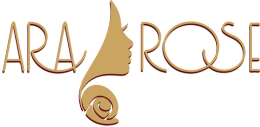Nose surgery
Nose surgery (rhinoplasty): correcting the shape and function of the nose for beauty and better breathing
Introduction
Rhinoplasty, or nose job, is one of the most popular cosmetic surgeries, and it aims to improve the appearance of the nose and sometimes correct breathing problems. It can help change the size, shape, or angle of the nose, as well as correct a deviated septum. Rhinoplasty can help people feel more confident by having a nose that is more in proportion to their face, while also addressing breathing problems.
How rhinoplasty works
Rhinoplasty is a surgery that is divided into two main categories:
-
Cosmetic rhinoplasty: This type of surgery aims to improve the appearance of the nose. The doctor uses various techniques to change the size, shape, and angle of the nose to harmonize it with other facial features. Changes include reducing or increasing the size of the nose, reshaping the tip of the nose, correcting a hump, or narrowing the nostrils.
-
Functional rhinoplasty: This type of surgery is performed to correct breathing problems caused by a deviated septum or other structural problems. This procedure corrects problems such as narrowing of the nasal passages, breathing difficulties, or nasal obstruction.
Sometimes, nose surgery can combine both aesthetic and functional aspects at the same time. This type of surgery is known as a combined rhinoplasty.
Benefits of rhinoplasty
-
Improving the appearance of the nose: Rhinoplasty can help change the size, shape, and proportion of the nose, adding to the overall beauty of the face.
-
Correcting breathing problems: If a person suffers from breathing problems such as nasal obstruction or narrowing of the nasal passages, rhinoplasty can correct these problems and make breathing easier.
-
Increased self-confidence: By having a nose that is more in proportion to the face, people usually feel better about their appearance, which can help increase self-confidence.
-
Lasting Results: Rhinoplasty provides permanent results, and in most cases, the changes made to the nose remain for a long time.
-
Repairing injuries: In cases where the nose has been damaged for various reasons (for example, due to an accident), rhinoplasty can help repair and reconstruct the nose.
Rhinoplasty process
-
Initial Consultation: During the consultation, the nose surgeon will assess the condition of your nose and consider your goals. The surgeon will then decide which surgical procedure is right for you and explain the possible changes to your nose.
-
Anesthesia: Rhinoplasty is usually performed under general anesthesia or local anesthesia with sedation. This depends on the type of surgery and the patient’s preference.
-
Surgery: During the procedure, the surgeon makes incisions inside the nose or on the outside of the nose. The surgeon then carefully reshapes the tissues and reshapes the nose to the desired shape. In some cases, the surgeon may use cartilage and bone from the nose or even use donated cartilage (usually from the ear or rib) to create changes in the shape of the nose.
-
Closing the incisions: After the surgery is complete, the surgeon closes the incisions using sutures, which are most often absorbable.
-
Recovery period: After surgery, the nose may have some swelling, bruising, and pain, which usually subsides within a few days to a week. Patients should avoid putting pressure on the nose and doing strenuous activities. Usually, after about a week, the patient can return to their daily activities.
Results and durability of rhinoplasty
The results of rhinoplasty are usually visible immediately after the cast and stitches are removed, but it may take several months to a year for full recovery and the final results to be seen. This is due to the reduction of swelling and the reconstruction of the nasal tissues.
The results of rhinoplasty are usually permanent and rarely require additional surgeries, unless unexpected changes or injuries occur.
Complications and risks of nose surgery
Like any other surgery, rhinoplasty may be associated with some complications. These complications include:
-
Infection: If post-surgical care is not followed, an infection may develop in the surgical area.
-
Swelling and bruising: Bruising and swelling around the eyes and nose are normal, but usually subside quickly.
-
Swelling and bruising: Bruising and swelling around the eyes and nose are normal, but usually subside quickly.
-
Dissatisfaction with the results: In some cases, the changes made may not meet the patient’s expectations and additional surgeries may be required.
Is rhinoplasty right for you?
If you are unhappy with the appearance of your nose or have breathing problems caused by a deviated septum or other structural problems, rhinoplasty can be a great option for you. It can also help if you are looking to improve the appearance of your nose and make it more harmonious with your face.
Conclusion
Rhinoplasty is an effective way to improve the appearance of the nose and correct breathing problems. This surgery can help people achieve a more harmonious nose for their face while also correcting functional problems in their nose. Contact our specialists for a consultation and appointment to see the benefits of this treatment.
